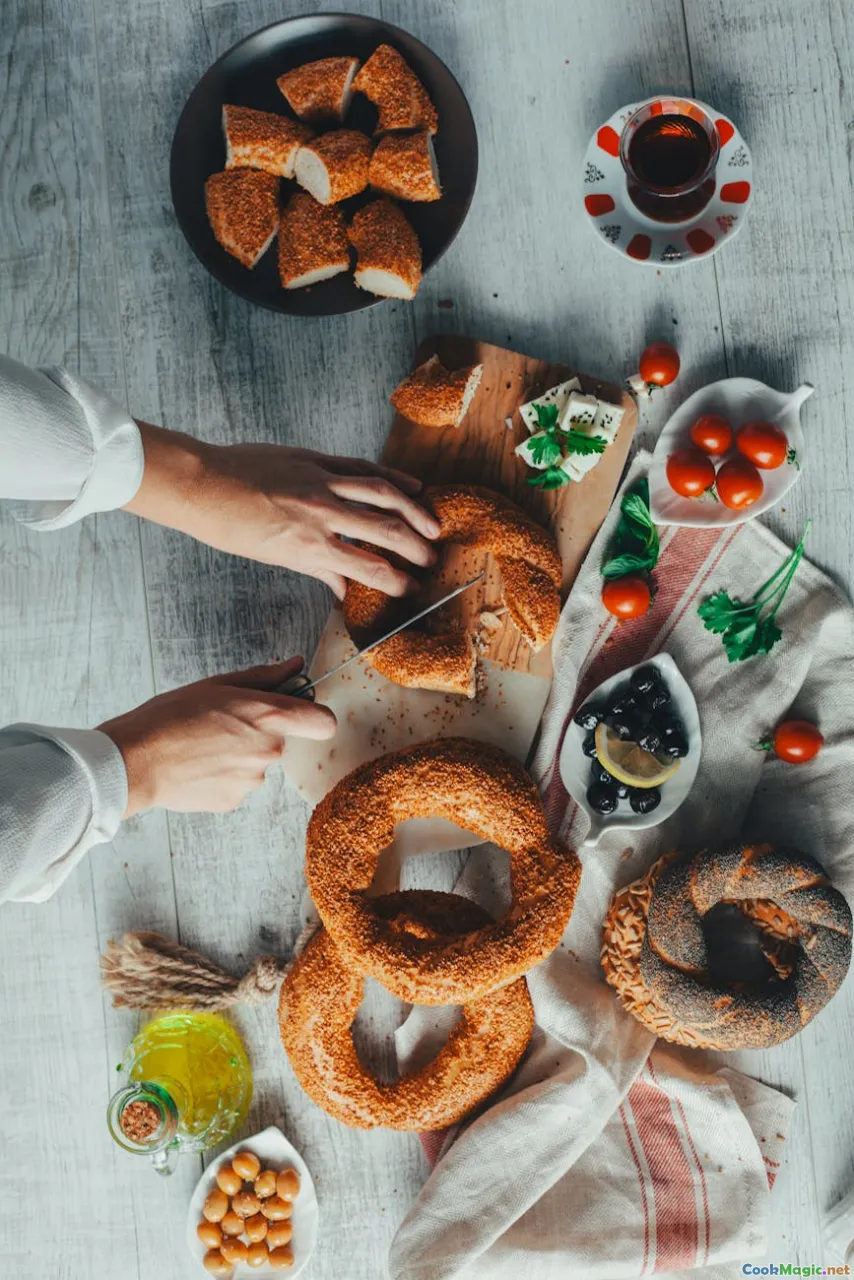Traditional Breads of Macedonia Explained
8 min read Discover the rich tapestry of Macedonia's traditional breads, their cultural significance, unique flavors, and the stories baked into each loaf. May 13, 2025 18:00
Traditional Breads of Macedonia Explained
Imagine walking through the vibrant markets of Skopje at dawn, the air thick with the aroma of freshly baked bread. These scents are not merely culinary; they are woven into the very fabric of Macedonian culture, echoing centuries of tradition, community, and identity. Macedonia's bread traditions are as diverse and layered as its history—each loaf telling a story of resilience, regional influences, and familial bonds.
An Introduction to Macedonia’s Bread Heritage
Macedonia, nestled at the crossroads of the Balkans, boasts a culinary landscape deeply rooted in its agricultural bounty and cultural exchanges. Bread, or "hleb" in Macedonian, is more than sustenance; it’s a symbol of life, hospitality, and tradition. From the rustic villages to bustling cities, bread holds a place of honor on every table, often accompanying every meal with a sense of warmth and belonging.
The Cultural Significance of Bread in Macedonian Life
In Macedonia, bread is intertwined with social rituals, religious ceremonies, and daily routines. It is customary to break bread together, sharing not just food but also stories, laughter, and community. During holidays like Christmas and Easter, special breads such as "pogača" are prepared, each with specific shapes and ingredients symbolizing prosperity and blessings.
The act of baking bread is often a communal affair, passed down from generation to generation. Grandmothers teach their grandchildren the subtle techniques, ensuring that the traditional methods remain alive amid modern influences. This passing of knowledge preserves a sense of continuity and cultural identity.
Exploring Macedonia’s Traditional Breads
1. Pogača
Perhaps the most iconic of Macedonian breads, pogačais a round, soft, and fluffy bread often baked in communal ovens or home kitchens. Its golden crust encases a tender, slightly chewy interior. Traditionally, it is made with simple ingredients: flour, water, yeast, salt, and a touch of olive oil or yogurt.**Variations and Shapes:**In different regions, pogača can take various forms—sometimes a flat round loaf, other times a braided or braided with herbs and sesame seeds sprinkled on top. Its versatility makes it suitable for everyday consumption and special occasions.Cultural Context: In rural communities, baking pogača is a family event, often prepared for celebrations or welcoming guests. The aroma wafting through the village is a beacon of hospitality and warmth.
2. Khleb (Traditional Macedonian Flatbread)
A staple in Macedonian households, Khlebis a rustic flatbread, characterized by its thin, crispy crust and soft, airy interior. Made with simple ingredients, it's typically baked in a wood-fired oven, imparting a smoky flavor.Technique & Texture: The dough is kneaded until elastic, then rolled out and cooked quickly at high heat, resulting in a bread that is crisp on the outside yet tender inside. It’s often used as a wrap or served alongside hearty stews and grilled meats.
3. Bureka (Baked or Fried Pastry Bread)
While more of a pastry than traditional bread, burekadeserves mention. Made with thin layers of dough filled with cheese, spinach, or meat, it is baked or fried until golden.Cultural Role: Bureka is commonly enjoyed during breakfast or as a snack, embodying the Macedonian knack for combining bread and filling into comforting, flavorful bites.
4. Lavash and Similar Variants
Although more associated with neighboring Balkan countries, Lavash and similar flatbreads are also found in Macedonia, especially among communities with Turkish and Middle Eastern influences. These soft, flexible breads are perfect for wrapping kebabs, cheeses, or fresh vegetables.
Baking Techniques and Ingredients
Macedonian bread-making relies on age-old techniques that emphasize natural fermentation and minimalistic ingredients. Yeast or sourdough starters are used to develop flavor and texture. Local ingredients like high-quality wheat flour, extra virgin olive oil, and yogurt enhance the bread’s taste.
Regional Flavors and Additions
Herbs such as rosemary, oregano, and thyme are often incorporated into the dough or sprinkled on top before baking, infusing the bread with aromatic complexity. Sesame seeds, black cumin, and nigella seeds add both flavor and visual appeal.
Personal Reflections and Stories
Growing up in a Macedonian village, I vividly remember the mornings when my grandmother would knead the dough, her hands expertly working through the flour, her voice humming traditional tunes. The oven’s warmth and the smell of dough baking created a sense of security and continuity.
One of my favorite memories is sharing a freshly baked pogača with neighbors during harvest festivals. The bread, still warm and fragrant, served as a tangible link to our ancestors’ hospitality and shared history.
Modern Takes and Preservation
While traditional methods remain cherished, contemporary bakers in Macedonia are experimenting with organic grains, sourdough fermentation, and innovative fillings. These modern twists honor tradition while appealing to new tastes and health-conscious consumers.
Final Thoughts
Macedonia’s traditional breads are more than just food—they are a testament to resilience, community, and cultural identity. Each loaf, crust, and crumb reflects centuries of history, regional influences, and familial love. Exploring these breads offers a delicious journey into the soul of Macedonian life, inviting us to savor not just the flavors but the stories baked into each bite.
Whether you are a seasoned baker or an eager food lover, embracing Macedonia’s bread traditions is a way to connect with a rich cultural heritage and experience the warmth of Macedonian hospitality—one slice at a time.









